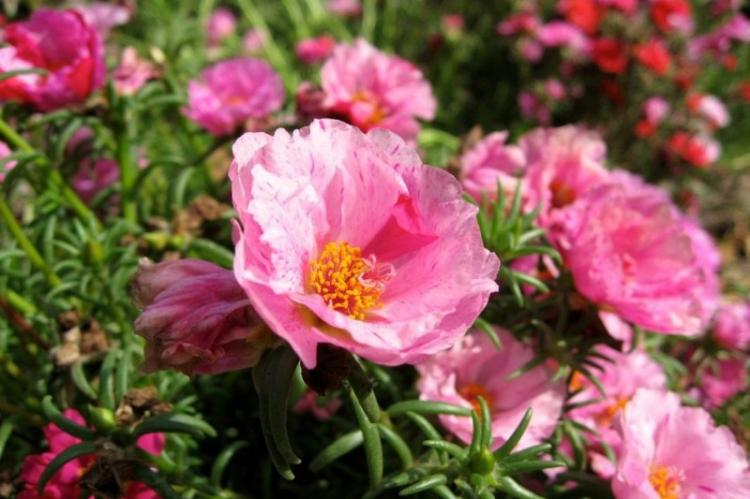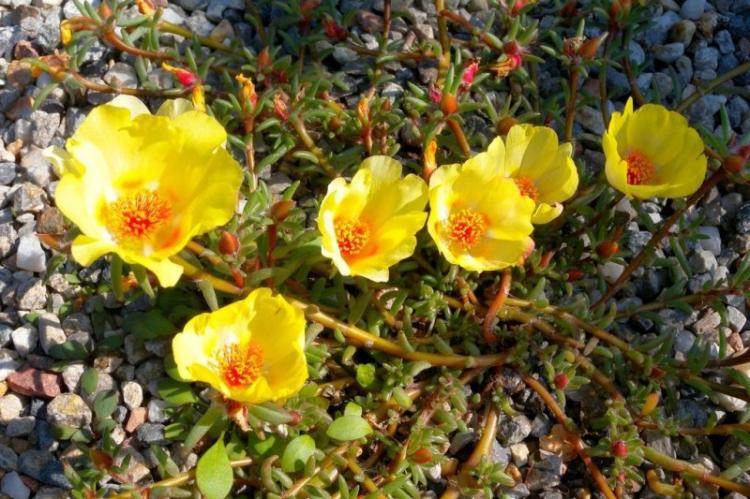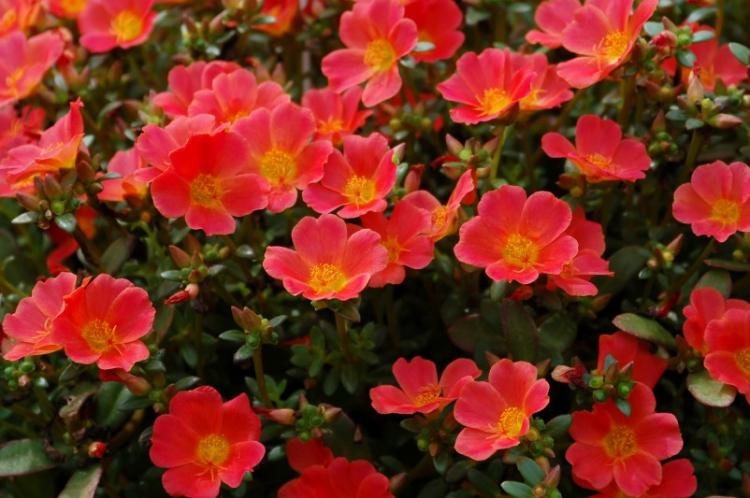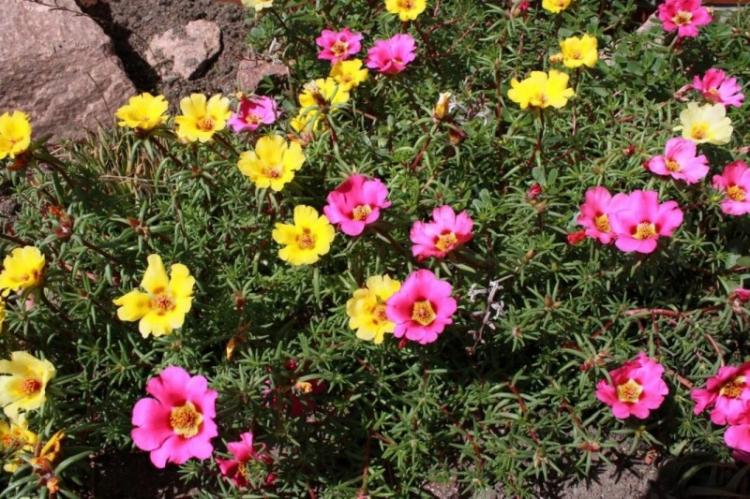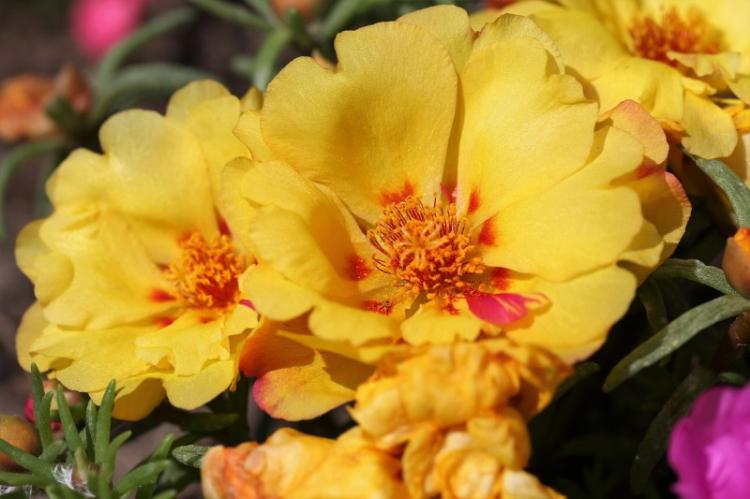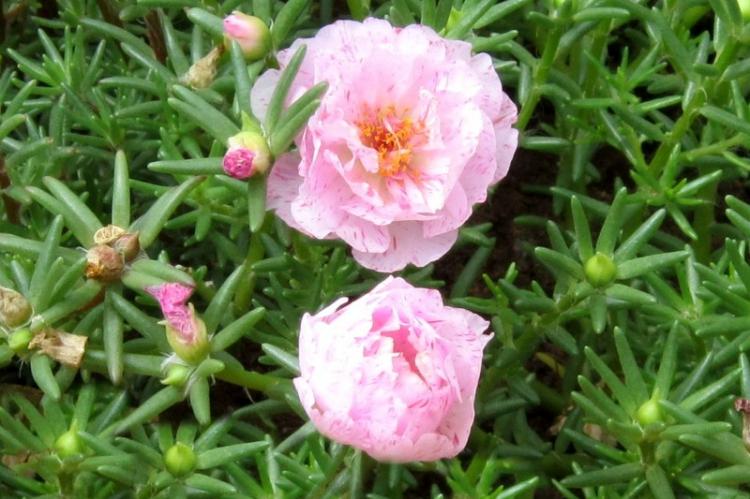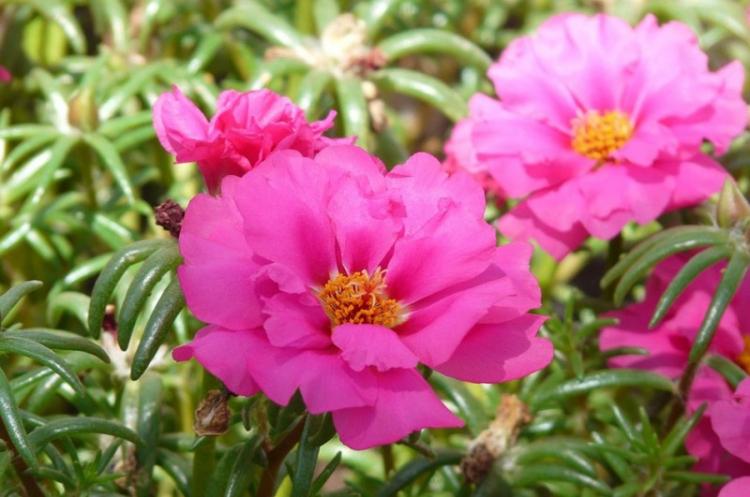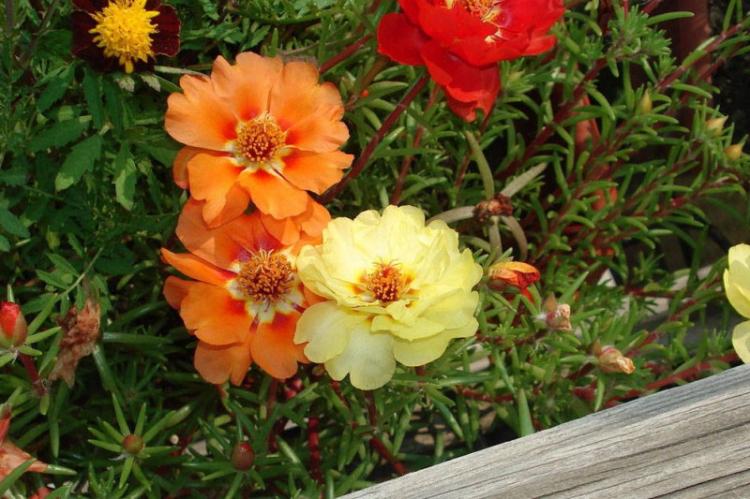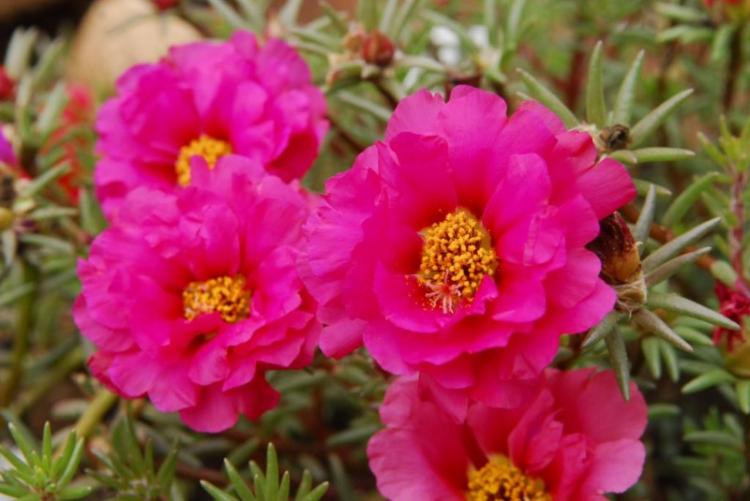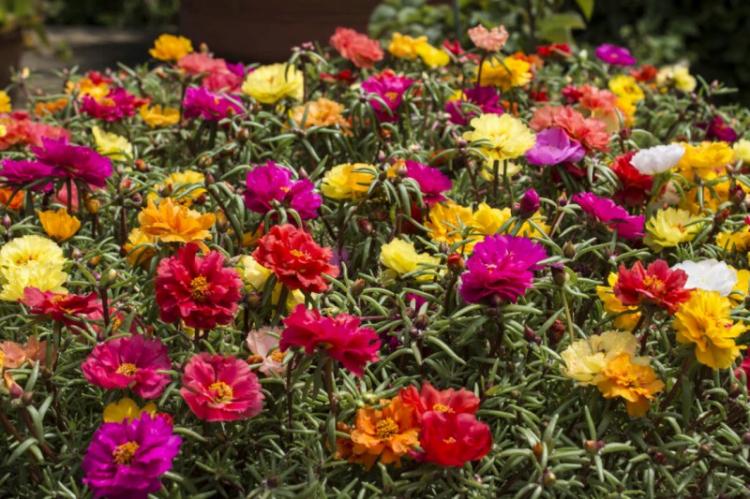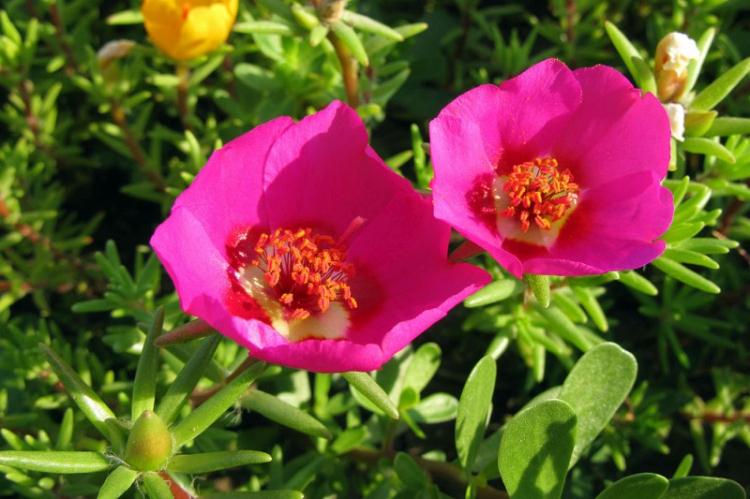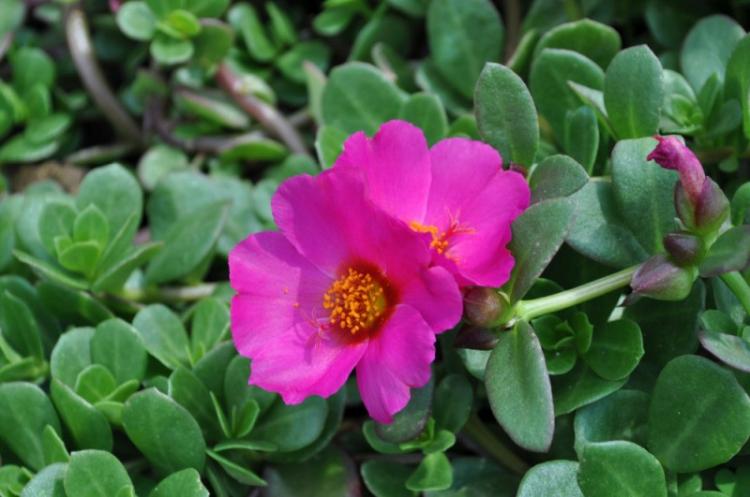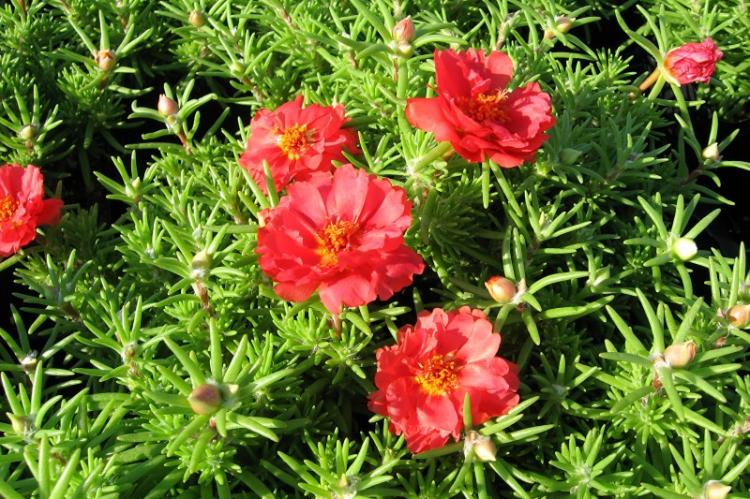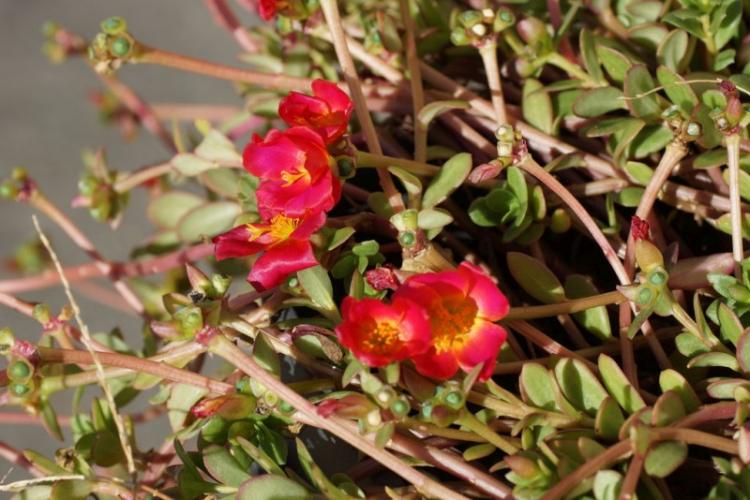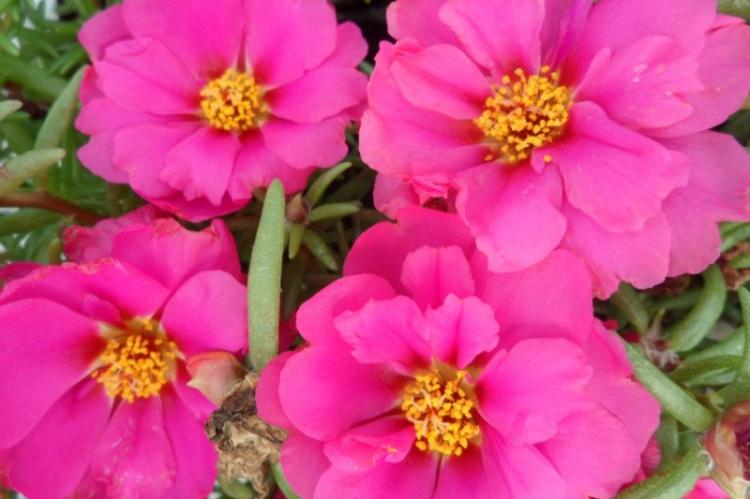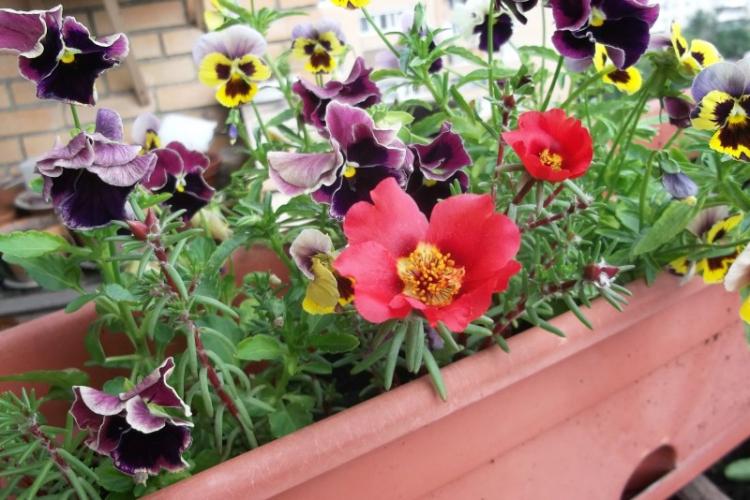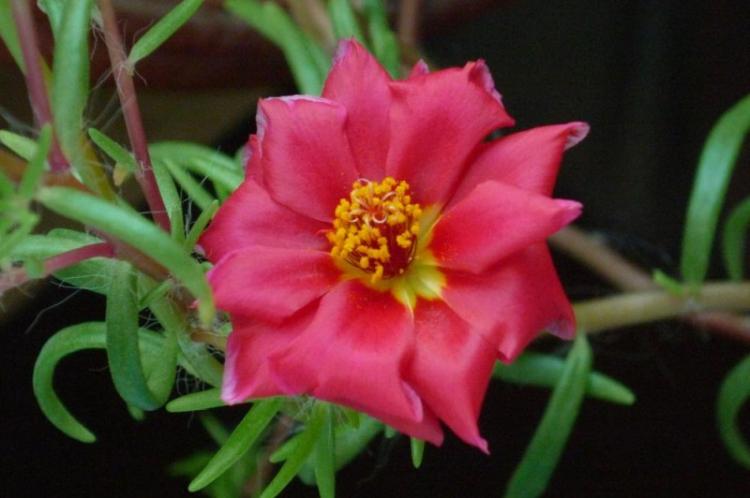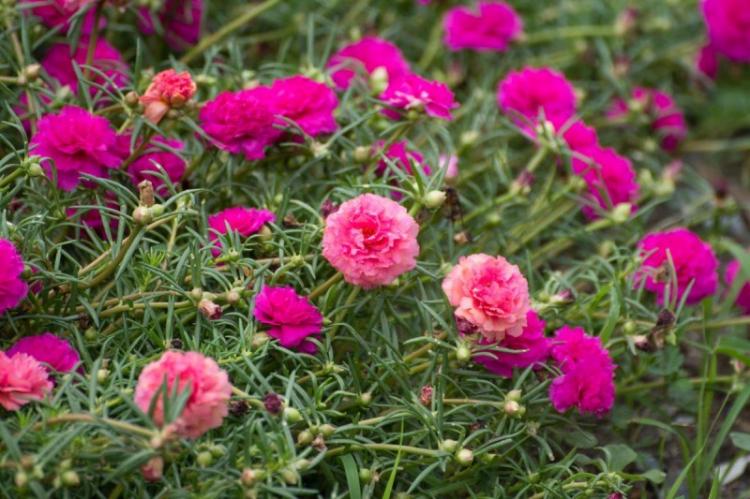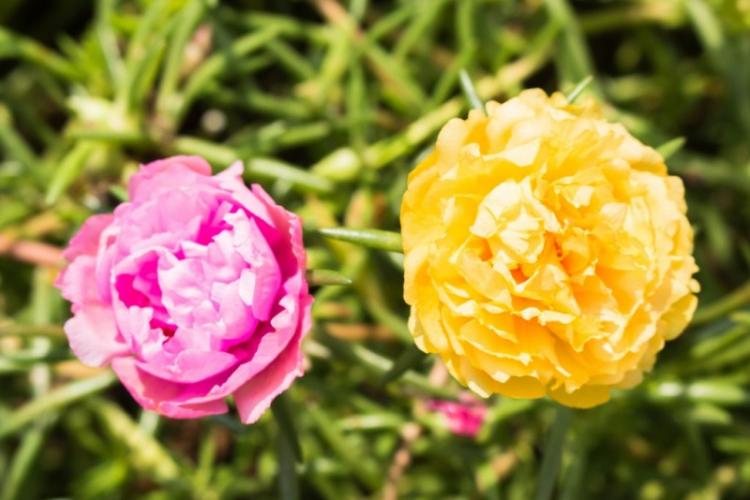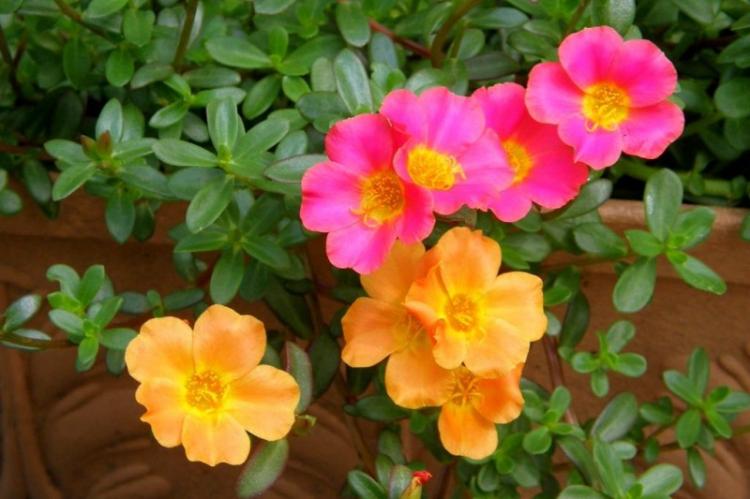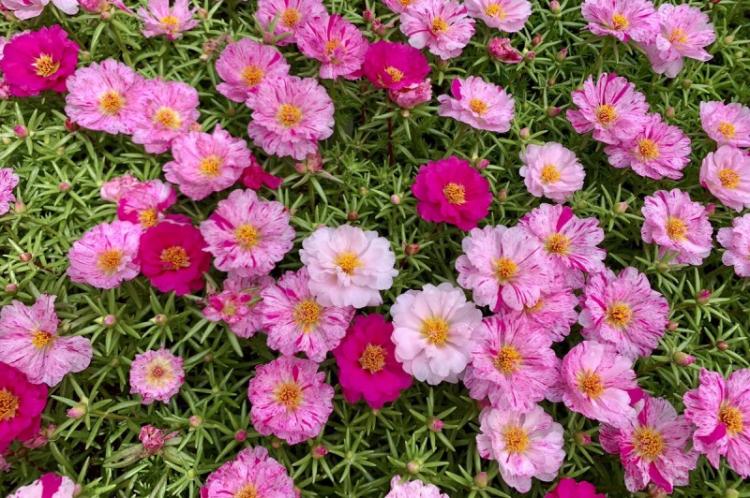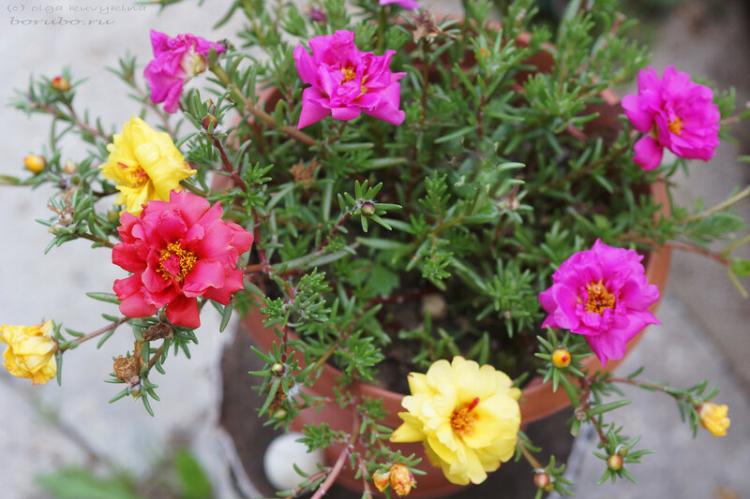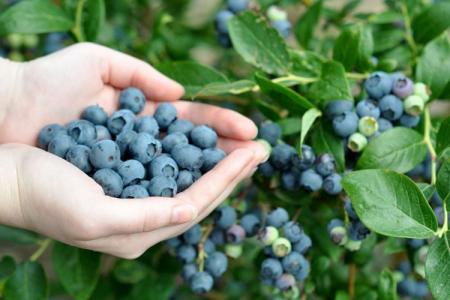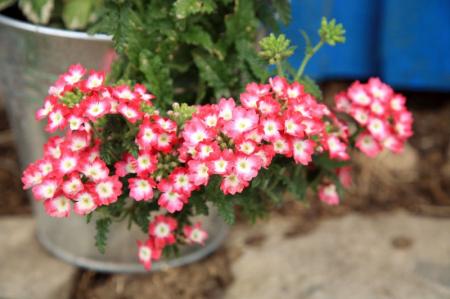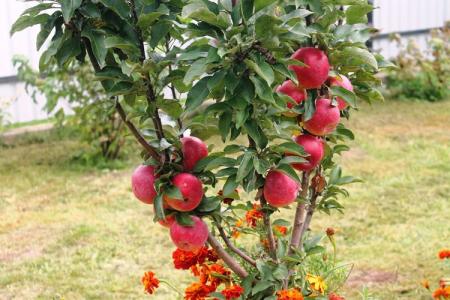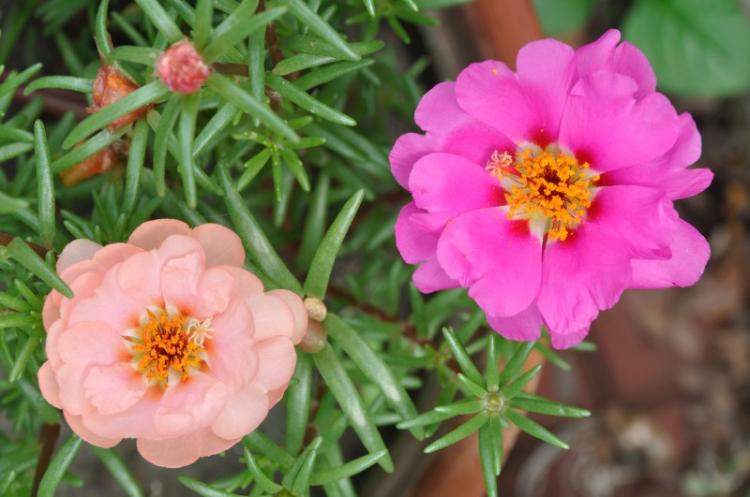
Do you like how luxurious green "carpets" with colorful flowers that cover the entire area look like? Do you think that such dense but delicate seedlings are too difficult to care for? Then pay attention to the purslane, because he is not only good-looking, but also amazingly unpretentious. And we will tell you what types of purslane there are, how to choose them and how to care for them!
general characteristics
Ground cover purslane is rather an ornamental weed, the beauty of which was appreciated by flower growers and could be used for its intended purpose. It is sown on alpine slides in landscape design, in rockeries, in containers, pots and border compositions.
The Latin name portula symbolizes the open gates, which resemble the seed pods of a flower. He came to us from the American continent, and spread throughout Europe in the Middle Ages. It was even believed that he heals all diseases: for example, severe wounds or snake bites.
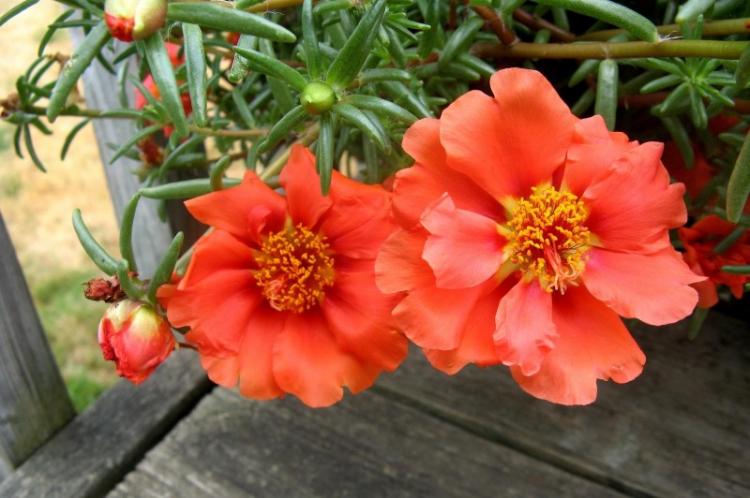
Purslane in medicine and cooking
A separate category is edible garden varieties of purslane, from which soups, salads and preparations are made. It is used in some medicinal compositions and diets, and the enterprising French even developed special species with yellow and red leaves for this.
The healing properties of purslane were known in antiquity, and over time, scientists only confirmed its anti-inflammatory and diuretic properties. The leaves and stems of purslane are rich in organic acids, easily digestible proteins, carotene, saponins, mineral salts and vitamins A, E, C, K. The juice of the plant helps to reduce cholesterol and blood sugar.
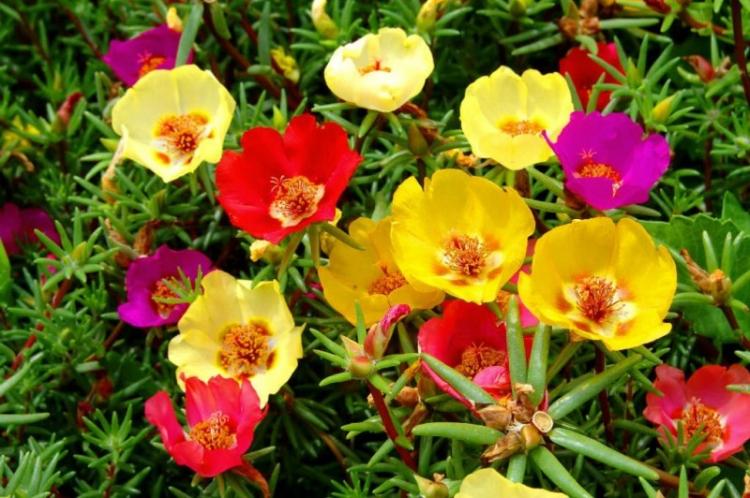
Types of purslane
All types of purslane can be divided into two broad categories: decorative garden and edible garden. The first are large-flowered, with many varieties that differ in color and terry. The latter are notable for their leaves, which are used in cooking and medicine.
Flamenco
The Flamenco variety combines all those features for which flower growers love decorative purslane so much. The main feature is large and spectacular double flowers, which can be of completely different shades. The bush itself is medium in size, but its shoots are strong and fleshy, covered with bright green needle leaves.
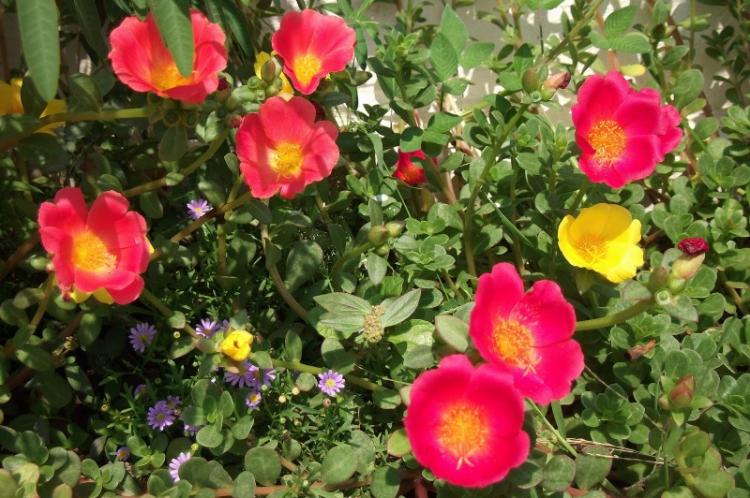
Cherry
A small graceful decorative Cherry purslane grows in gardens only up to 15 cm in height. At the same time, it has elastic and fleshy creeping shoots that quickly cover the soil. The variety got its name due to the pronounced cherry shade of large double flowers up to 5 cm in diameter.
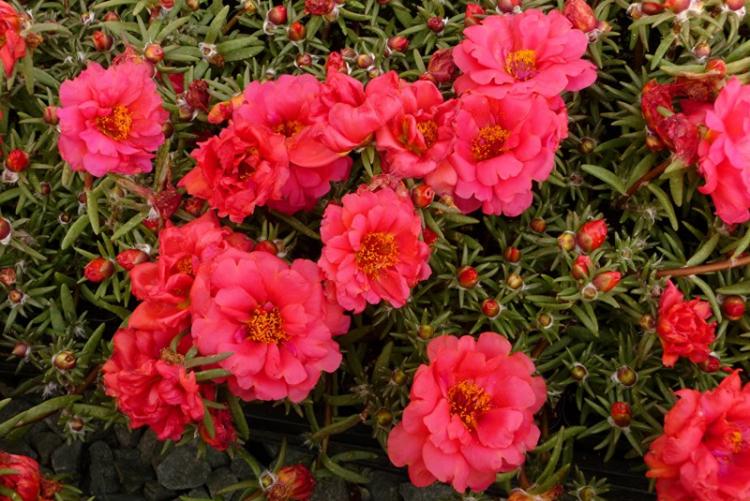
Cream
A hybrid delicate garden purslane with large flowers, which sometimes open even more than 5 cm. The delicate creamy shade becomes darker and richer from the edges to the center.
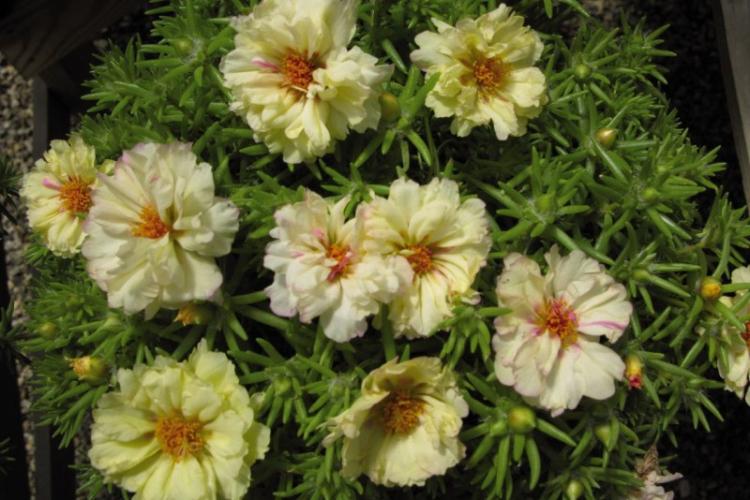
Pun
Another compact garden variety with long, resilient stems, like Cherry. But the pun is distinguished by shades of large juicy flowers that stand out favorably against the background of the green carpet. This variety is especially loved by landscape designers for its brightness and versatility.
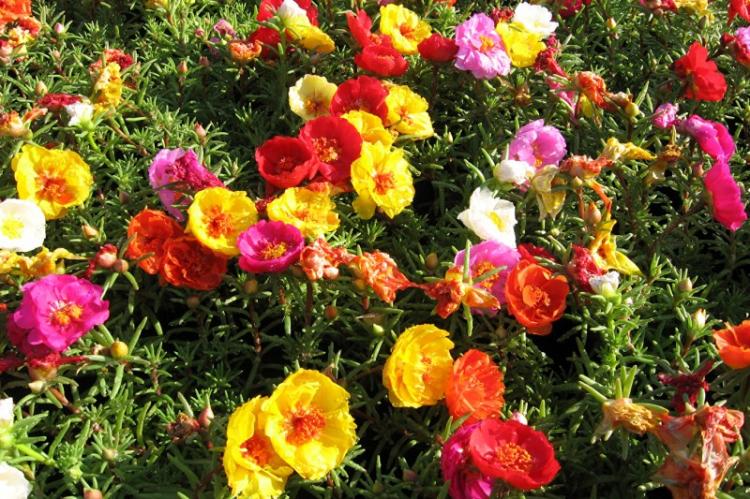
Scarlet purslane
The name of the variety directly indicates the shade of medium-sized double flowers. This purslane has two expressive features: its stem is highly branched, and the plant blooms until mid-autumn.
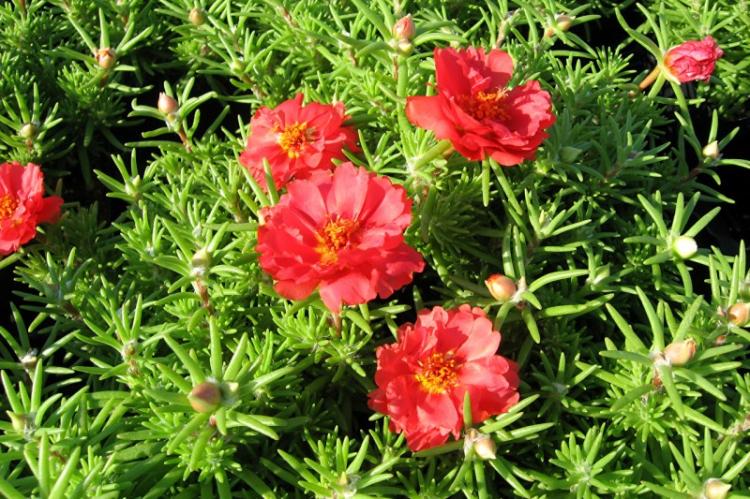
Sanglo
The graceful decorative Sanglo purslane is painted in a delicate shade of pink. Fragile and delicate flowers, larger than average, look especially interesting against the background of long needle-like leaves. Another feature: during cloudy weather and rains, Sanglo buds do not close.
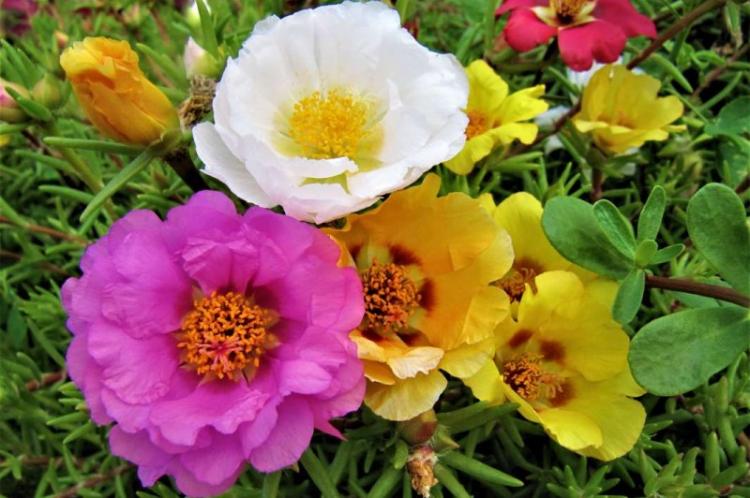
Sonya
Another variety of garden purslane, a feature of which is a variety of shades. Sonya flowers can be white, yellow, scarlet or purple, and the texture of the petals is satin, with tints.Towards the middle, dark spots appear on them, which frame the spread out brush.
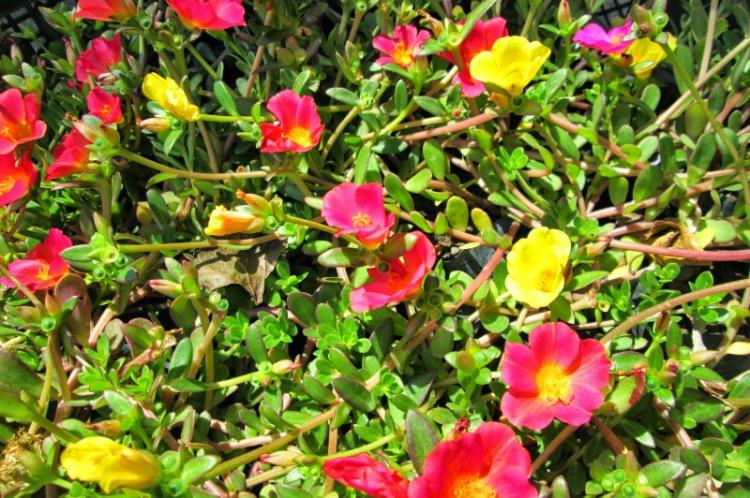
Makovei
This is a garden purslane, which grows in bushes up to 35 cm tall. Within a month after germination, its stems and branches can be used for food. The appearance of the leaves of Macovey is also slightly different: they are ovoid, saturated glossy green.
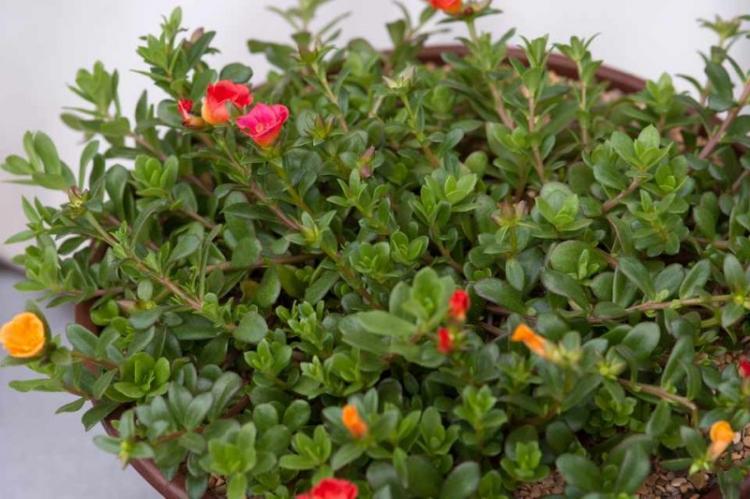
Firefly
The firefly is one of the tallest garden purslane, which grows up to 45 cm and higher. Its thick, fleshy stems are densely covered with medium-sized leaves. The Firefly is ready for use in cooking earlier than many relatives: 3-3.5 weeks after germination.
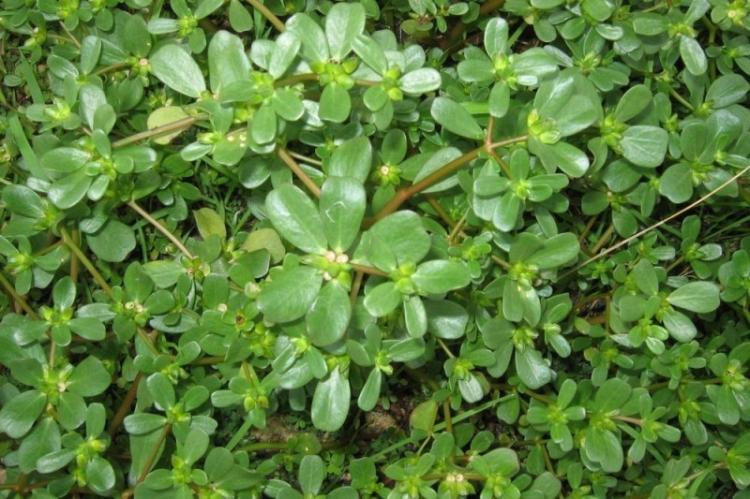
Paradox
A small garden purslane is lower than most other edible varieties: the bushes grow somewhere up to 20 cm. This is due to the fact that its stems are even more creeping, covered with small but thick oval leaves. The shade of the foliage of Paradox is slightly yellowish, and you can use the plant for food in a month.
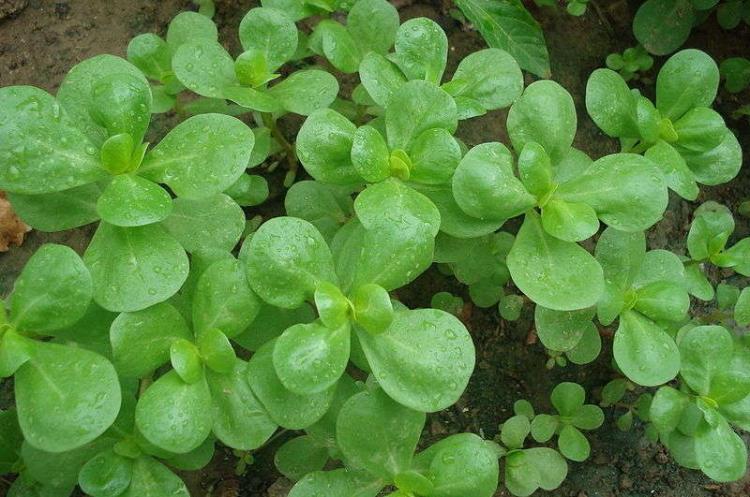
Ampel purslane
Purslane is an annual plant, but there are several perennial ampelous varieties. They are not adapted for life in the open field in our latitudes, because they still cannot stand the winter. But in home pots, containers and pots, such a flower feels quite confident: the main thing is to control the humidity and take it out into the sun in warm weather.
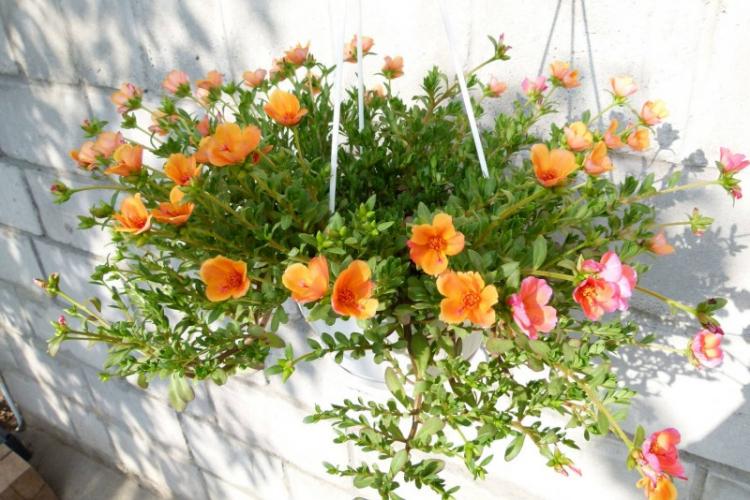
Purslane care
Many growers grow purslane as an unpretentious ground cover plant. It gracefully covers the ground with thorny foliage with variegated multi-colored flowers. And for leaving, it is enough to follow a few simple rules, which even inexperienced gardeners can cope with.
Temperature
Like other southern succulents, purslane easily copes with the heat and even tolerates temperatures up to +45 degrees. Therefore, in temperate latitudes, it is an ideal choice for summer seedlings in a sunny backyard. The minimum temperature is +10 degrees, and the flower does not tolerate severe frosts at all and dies already at 0.
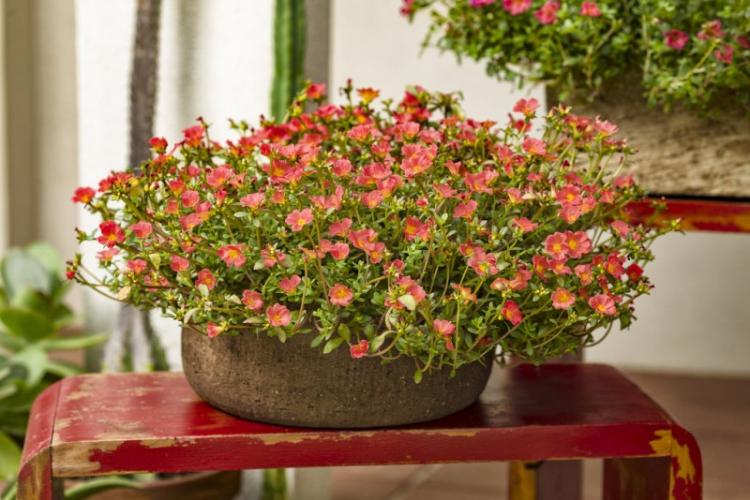
Lighting
Purslane feels best in open, sunny areas or in slightly shaded areas. But even if there is a shadow, it should be light and insignificant, otherwise the flower will not bloom in all its glory. Lighting is one of the most important and fundamental requirements of an otherwise unpretentious purslane.
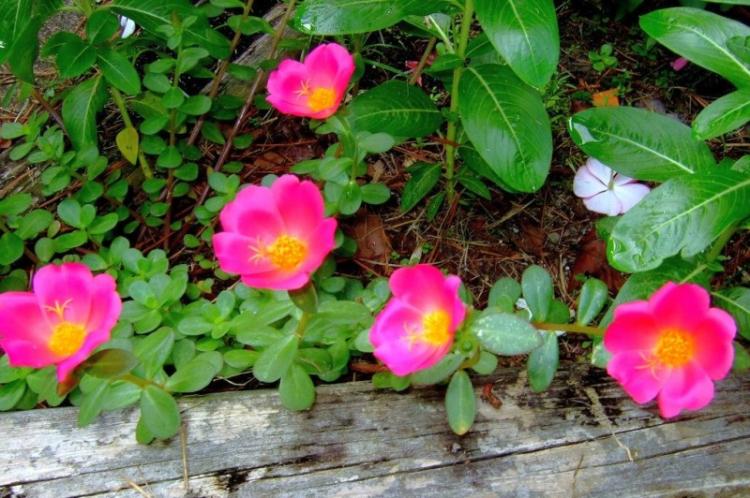
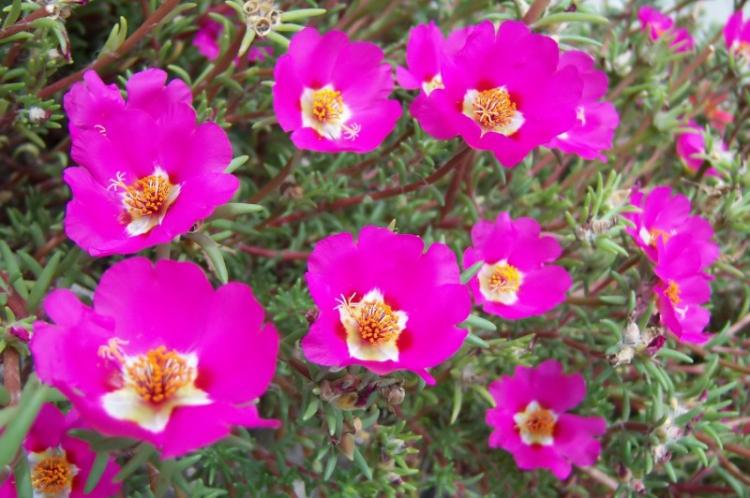
Watering
Purslane doesn't need too much water, like many other garden flowers. With excessive watering and constant stagnation, fungal diseases appear - especially if the air temperature drops. Water the flowers more often only during the heat, and then when the soil is completely dry.
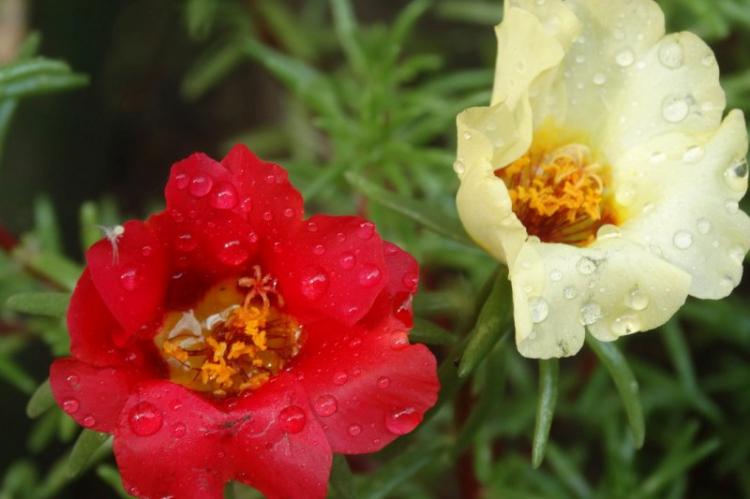
Fertilizers and feeding
Purslane is by nature an annual succulent, so it doesn't need too difficult conditions. He feels comfortable even on poor sandy soil, and tolerates saturated nutritious peat worse. If you fertilize the soil too intensively, the greens really grow actively, but to the detriment of flowering.
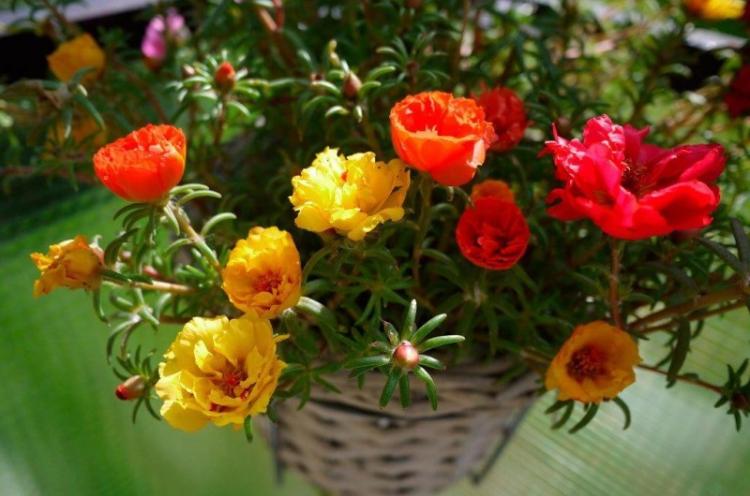
Pruning
Purslane needs to be trimmed and weeded, otherwise it grows too quickly. If left to chance, it becomes a rather aggressive weed. Therefore, it is also important to remove faded flowers, otherwise seed pods will form in their place, and small seeds rapidly spread throughout the site.
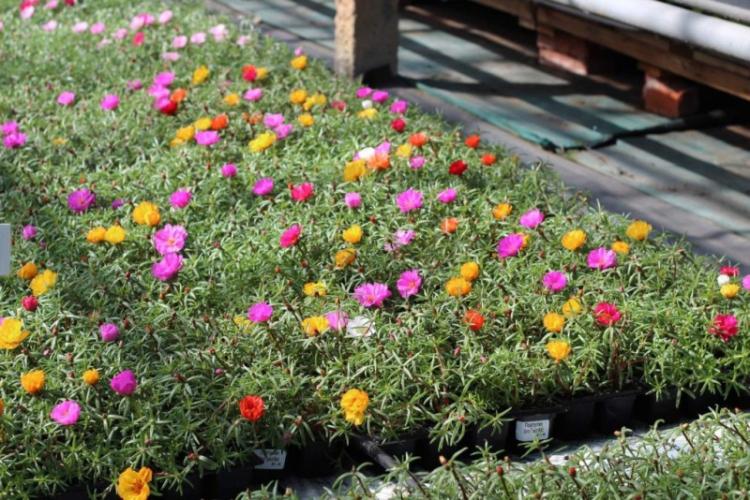
Planting and breeding purslane
Purslane can be grown directly from seeds planted in the ground, but then it will not bloom immediately. Any light permeable soil that must be pre-moistened is suitable for germination. Mix fine seeds with calcined sand and spread evenly over the surface. After that, cover the sowing with foil, air it once a day and make sure that the temperature is above 20 degrees.
After a week and a half, the first shoots make their way, which means that you can remove the film. You do not need to water the sprouts directly, just spray them with a spray bottle. Dive and plant the sprouts when an average of two leaves appear on them: the recommended distance is 4 cm.
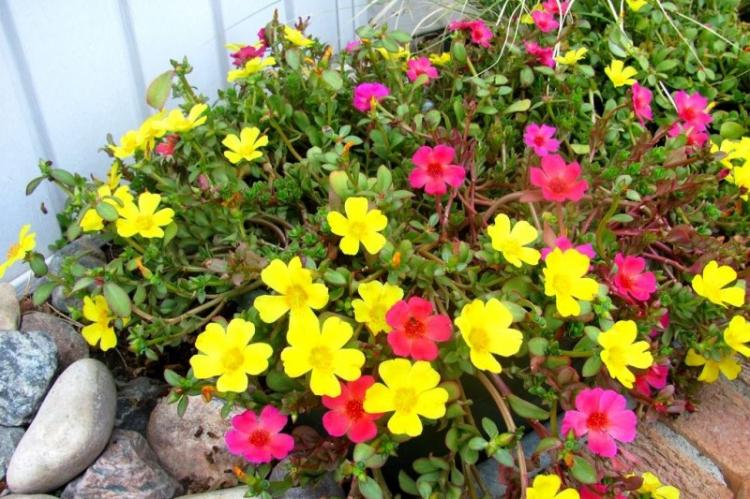
If you want the purslane to bloom as quickly as possible, propagate it by cuttings. The sprouts should be transplanted into open ground at the beginning of summer, when the threat of unexpected frosts has already passed. Start hardening the seedlings in a couple of weeks, gradually taking them outside for several hours.
Cuttings are planted when they already have about a dozen leaves with buds. Plant them up to 20 cm apart and regularly weed and loosen the soil until the seedlings cover it with a flowering carpet.
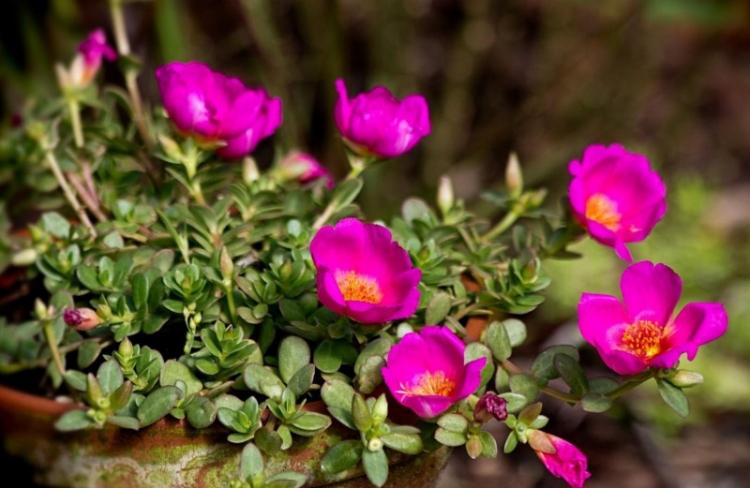
Pest and disease control
Purslane rarely gets sick and is not very attractive to parasites - this is another reason for its popularity among gardeners. To forget about aphids, slugs and snails, it is enough to treat seedlings with insecticides on a schedule.
Typical diseases are associated with watering and moisture: these are various fungi and rot. Gray mold spreads if cool rainy weather lasts too long. The same applies to root rot, from which the ground part withers and turns yellow: if the problem is not solved in time, the plant will quickly die.
Control is very simple: do not overuse watering, thin out the green carpet in time, remove dead plants and weeds. If you find signs of a disease, immediately remove all damaged areas before it spreads. And during an unforeseen prolonged bad weather, treat the garden with special fungicides for prevention.
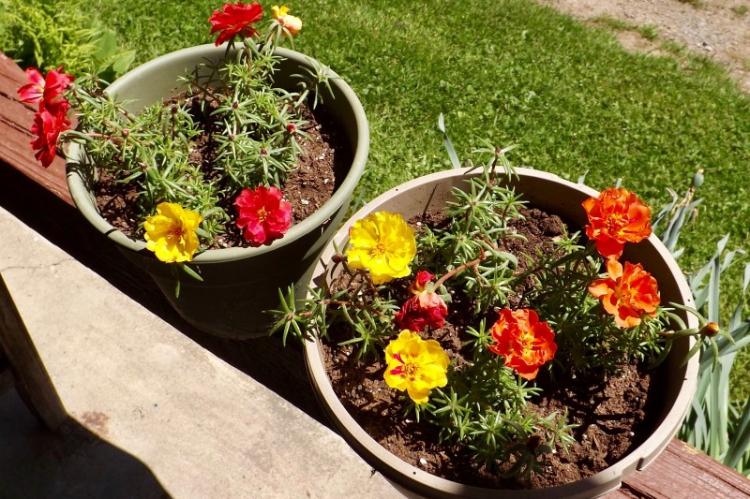
Purslane - photo
At first glance, purslane may seem too simple and inconspicuous. But to be convinced of the opposite, it is enough to see what a luxurious "carpet" it turns into. For this we offer you a whole selection of photos!
